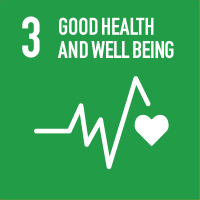Studying at the University of Verona
Here you can find information on the organisational aspects of the Programme, lecture timetables, learning activities and useful contact details for your time at the University, from enrolment to graduation.
Study Plan
The Study Plan includes all modules, teaching and learning activities that each student will need to undertake during their time at the University.
Please select your Study Plan based on your enrollment year.
1° Year
| Modules | Credits | TAF | SSD |
|---|
Professional Laboratories (1st year)
2° Year activated in the A.Y. 2023/2024
| Modules | Credits | TAF | SSD |
|---|
3° Year activated in the A.Y. 2024/2025
| Modules | Credits | TAF | SSD |
|---|
| Modules | Credits | TAF | SSD |
|---|
Professional Laboratories (1st year)
| Modules | Credits | TAF | SSD |
|---|
| Modules | Credits | TAF | SSD |
|---|
Legend | Type of training activity (TTA)
TAF (Type of Educational Activity) All courses and activities are classified into different types of educational activities, indicated by a letter.
Critical nursing care - RIANIMAZIONE (2024/2025)
Teaching code
4S000102
Teacher
Credits
2
Language
Italian
Scientific Disciplinary Sector (SSD)
MED/41 - ANAESTHESIOLOGY
Period
1 SEMESTRE PROFESSIONI SANITARIE dal Oct 1, 2024 al Dec 20, 2024.
Courses Single
Not Authorized
Program
I) Initial measures for admission to the intensive care unit:
1) Respiratory management and emergency breathing
2) Basism monitoring and vascular access
3) Circulatory drugs and circulatory therapy
4) Monitoring of the intensive patient
II) Regulation plan in the intensive care unit:
A) Basic measures:
1) Liquid supply
(Water, electrolyte and acid-base)
2) Nutrition
(Parenteral and enteral nutritional therapy)
3) Stress ulcer prophylaxis
4) Thromboembolism prophylaxis
5) Remedial measures
B) Further treatment:
1) Analgesia and pain therapy
2) Ventilation, bronchoscopy and tracheotomy
3) Extended hemodynamic monitoring
4) Radiological diagnostics in the intensive patient
5) Pharmacological therapy and antibiotic therapy
6) Blood transfusion and coagulation therapy
7) Intensive care
III) Special medical conditions
1) SIRS and sepsis
2) Shock and multiorgan failure
3) Acute lung failure, ARDS
4) Abdominal disorders
5) CNS disorders
6) Dreams and accidents
7) Renal disease
8) Hereditary diseases
9) Other intensive medical pictures
(E.g. HELLP, eclampsia
IV) Important intensive medical topics:
1) Infections and hygiene in the intensive care unit
2) Transport of the intensive patient
3) Intraclinical resuscitation
4) Brain death diagnosis and organ donation
5) Fever in the intensive patient
Bibliography
Didactic methods
Clinical cases are proposed to stimulate critical thinking, to verify knowledge / study, understanding of the topics and the ability to identify / describe care management through multi-professional interventions.
Learning assessment procedures
Written exam with multiple choice closed questions and 1 question short answer open questions for knowledge and decision making.
Evaluation criteria
18/30 minimum result to pass the written test
Exam language
Tedesco

